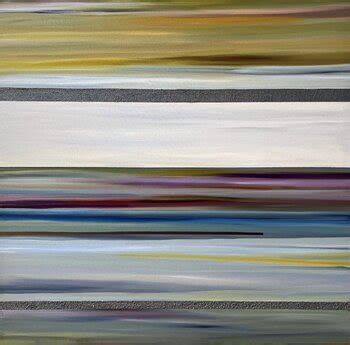Michelangelo’s David stands as a timeless masterpiece in the world of sculpture, captivating audiences with its breathtaking beauty and profound artistry. Created in the early 16th century, this iconic statue not only showcases Michelangelo’s unparalleled skill but also represents the epitome of Renaissance art. The sculpture’s intricate details, innovative techniques, and symbolic significance have cemented its place in cultural history. As we explore the historical background, artistic significance, and enduring impact of Michelangelo’s David, we gain a deeper appreciation for its monumental influence on both past and contemporary art. Join us in uncovering the story behind this legendary work and its lasting legacy.
gamesfats.com will lead an exploration of this topic in detail.
1. Historical background of Michelangelo’s David.
Michelangelo’s David was sculpted between 1501 and 1504 during the height of the Italian Renaissance, a period renowned for its artistic innovation and cultural rebirth. Commissioned by the Opera del Duomo for the Cathedral of Florence, the statue was originally intended to be part of a series of prophets placed along the roofline. However, Michelangelo’s vision and craftsmanship transformed David into a standalone masterpiece. Carved from a single block of Carrara marble, the statue stands at an imposing 17 feet tall, showcasing Michelangelo’s extraordinary ability to depict human anatomy with precision and lifelike detail. Upon its completion, David was placed in the Piazza della Signoria, symbolizing the strength and independence of the Florentine Republic. Its creation marked a pivotal moment in Michelangelo’s career, solidifying his reputation as one of the greatest artists of his time and leaving an indelible mark on the history of art.

2. Artistic significance and innovative techniques used.
Michelangelo’s David is celebrated not only for its grandeur but also for the artist’s groundbreaking techniques and profound artistic significance. Unlike previous depictions of David, which often showed him post-victory, Michelangelo chose to portray him before the battle with Goliath. This decision highlights David’s contemplative expression and tense, poised stance, embodying the Renaissance ideal of capturing a moment of psychological depth and human emotion.
Michelangelo’s mastery of marble is evident in the statue’s intricate details, from the veins on David’s hands to the subtle muscles and sinews. He employed a technique called “non-finito,” where parts of the sculpture appear deliberately unfinished, giving a sense of dynamic movement and realism. This approach allowed for an unprecedented level of detail and lifelike quality, setting a new standard for sculptors.
Furthermore, Michelangelo’s understanding of human anatomy was revolutionary. He studied cadavers to accurately depict the human form, resulting in a sculpture that combines idealized beauty with anatomical precision. David’s proportions and pose follow classical principles, yet they are infused with a naturalism that breathes life into the marble, making it a masterpiece that transcends time and continues to inspire artists and admirers alike.

3. Symbolism and cultural impact of the sculpture.
Michelangelo’s David is more than a remarkable work of art; it is a powerful symbol with deep cultural significance. The statue represents the biblical hero David, who defeated the giant Goliath with intelligence and courage. This depiction of David, captured in a moment of contemplation and readiness, symbolizes the triumph of good over evil and the victory of human spirit and intellect against formidable odds.
For the people of Florence, David became a symbol of their own resilience and independence. The statue was erected in the Piazza della Signoria, the political heart of the city, during a time when Florence was a republic threatened by powerful rival states. David’s vigilant gaze was directed towards Rome, symbolizing Florence’s defiance and determination to protect its freedom.
Culturally, David has had a lasting impact, influencing not just art but also political thought and civic pride. It became an emblem of the Renaissance, embodying the period’s values of humanism, individualism, and the pursuit of excellence. The statue’s portrayal of idealized human beauty combined with intense emotional expression set a new benchmark for artists and continues to inspire and captivate viewers around the world, reinforcing its status as a timeless icon.

5. Restoration efforts and preservation challenges.
Over the centuries, Michelangelo’s David has faced various restoration efforts and preservation challenges. Environmental factors, such as pollution and temperature fluctuations, have contributed to the marble’s deterioration. Additionally, the statue has been exposed to physical damage, including a significant incident in 1991 when a vandal struck the toes of the left foot with a hammer.
To counter these issues, meticulous restoration efforts have been undertaken. In the early 2000s, a major restoration project involved cleaning the surface to remove centuries of grime while preserving the delicate details. Specialists used gentle, non-invasive techniques to ensure the integrity of the marble was maintained.
Ongoing preservation efforts include controlling the statue’s environment to minimize exposure to harmful elements. The Accademia Gallery in Florence, where David is housed, employs advanced climate control and monitoring systems to protect the sculpture. Despite these challenges, continuous efforts by conservators and art historians help ensure that Michelangelo’s David remains an enduring symbol of artistic excellence for future generatio

6. Location and public accessibility of the sculpture.
Michelangelo’s David is housed in the Accademia Gallery in Florence, Italy, where it has been displayed since 1873. The gallery, renowned for its extensive collection of Renaissance art, provides a climate-controlled environment to preserve the statue’s delicate marble. Visitors from around the world flock to the Accademia to witness the grandeur of David up close, marveling at its impressive scale and intricate details.
Before its relocation to the Accademia, David stood in the Piazza della Signoria, the political hub of Florence, for over three centuries. Today, a replica occupies the original outdoor location, allowing the public to appreciate the statue’s historical significance in its intended civic context.
The Accademia Gallery ensures that David remains accessible to a broad audience by offering guided tours and educational programs. The statue is a focal point of the museum, situated under a skylit dome that enhances its dramatic impact. This thoughtful presentation, combined with the gallery’s efforts to accommodate visitors, makes Michelangelo’s David not only a revered masterpiece but also an accessible cultural treasure, inviting admiration and study from art enthusiasts and scholars alik

7. Influence of David on contemporary art and artists.
Michelangelo’s David has had a profound influence on contemporary art and artists, serving as a quintessential model of sculptural excellence and anatomical precision. The statue’s emphasis on idealized human form and emotional depth has inspired countless artists across various mediums. Its impact extends beyond sculpture, influencing painters, photographers, and digital artists who draw upon David’s dramatic pose and detailed craftsmanship in their own work.
In contemporary art, David’s legacy is evident in the way artists approach themes of human strength, vulnerability, and heroism. The statue’s innovative use of space and proportion has become a reference point for exploring the human figure in new and diverse ways. Many modern artists incorporate elements of David’s form and posture into their work, blending classical techniques with contemporary interpretations.
Furthermore, David’s role as a symbol of defiance and resilience continues to resonate in modern art, often being reimagined to reflect current social and

Michelangelo’s David stands as a timeless masterpiece, embodying artistic brilliance and cultural significance. Its detailed craftsmanship, innovative techniques, and profound symbolism continue to captivate and inspire. As a symbol of human strength and intellectual prowess, David not only reflects the grandeur of the Renaissance but also remains a powerful influence in contemporary art and cultural discourse.
gamesfats.com

